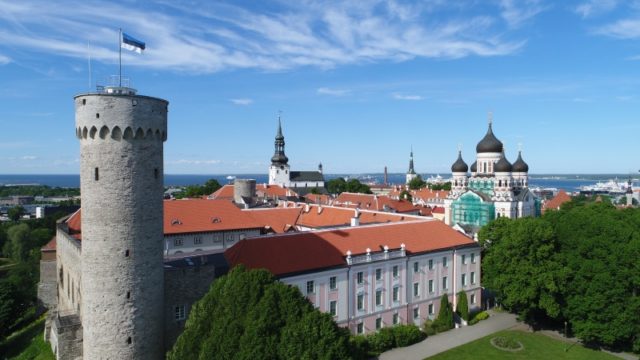Toompea Hill
Toompea Hill is the historic birthplace of the city of Tallinn. It is where the first traces of permanent human presence in the area were discovered, where the first fort was created and the first stone castle was built. Whoever controlled the castle, controlled the Estonian lands. Today there are three main attractions on the hill and several different look-out spots, offering panoramic views of the historic center.


First and foremost the castle itself, shaped by its Danes, Germans, Swedes, Russians, and finally Estonian overlords, has incorporated the different historic periods and styles, from Gothic, to Renaissance and Rococo. It is separated in four parts one of them the Riigikogu building (the Parliament Building). There are guided tours for groups in English every day and on Fridays for single visitors. You could even watch a session of parliament from the public gallery.


The castle is on the south edge of the hill, on the west side of Lossi Plats, of the castle square. Facing it from the east side of the square is the other main attraction of the Toompea Hill, Alexander Nevsky Cathedral. The imposing Russian Church was built by tsar Nicholas II in 1900 as a symbol of his expanded empire.


The cathedral was dedicated to the Prince of Novgorod, Alexander Yaroslavich Nevsky, who led the famous Battle of the Ice at Lake Peipsi in 1242, which halted the German crusaders’ eastward advance. It was deliberately placed in this prominent location right in front of Toompea Castle, on the same spot where a statue of Martin Luther had previously stood, to show the mainly Lutheran locals who was in charge. More


The third attraction is Pikk Hermann, the long tower built on the second half of the 14th century by the Knights of the Livonian Order. The Castle had four towers – Pikk Hermann, Landskrone, Pilsticker and Stür den Kerl – which protected its four corners. Over time, these have been converted to fit the current needs. The most important of the remaining towers is Pikk Hermann. The 83 metre high “Tall Hermann” was the tallest stone tower in the Baltic Sea region during the Middle Ages. Initially it functioned as a lookout and defence tower with sweeping views which ensured that no enemy could approach unnoticed.

